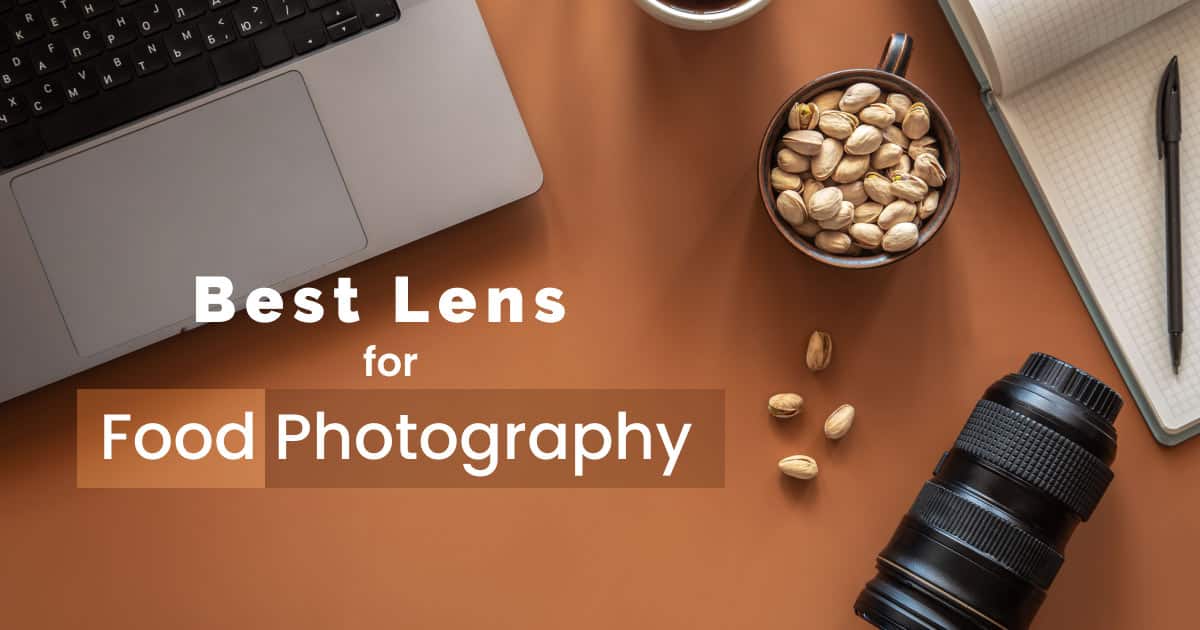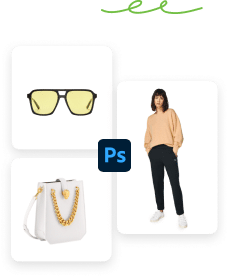In today’s foodie world, photography is in trend. It is becoming customary to click lots of food photos before digging in.
Light! Camera! and Click! – this is the main focus of every food photographer.
We are overloaded with the most appealing and appetizing photos and videos when we open our social media accounts, especially Pinterest and Instagram. Even entering any restaurant, food photos cover almost half of the wall.
It’s important to look up the features and quality of the camera and lens before taking a lot of sharp, creative images. You can purchase any camera in any price range, but the lens is the most important factor to consider. When it comes to finding the best lens, it’s always a matter of headache.
So, don’t worry! We are here to dig out of you a hole of finding a lens for food photography.
What you’ll learn in this article
- 1 Take this Into Consideration When You Choose a Lens for Food Photography
- 2 What are the Best Lens for Food Photography?
- 3 The 10 Best Lenses for Food Photography
- 3.1 1. Canon RF 50mm F1.8 STM (Best for Beginners)
- 3.2 2. Canon RF 16mm F2.8 STM (Best for Food Vlogger)
- 3.3 3. Canon RF 100mm F2.8L MACRO IS USM ( Extreme Close-ups)
- 3.4 4. Canon RF 24-105mm F4-7.1 IS STM ( Best Versatile Zoom Lens)
- 3.5 5. Nikon AF-S DX 40mm f/2.8G Micro (Best Close-up)
- 3.6 6. Nikon AF-S VR Micro-NIKKOR 105mm f/2.8G IF-ED Lens (Best for Auto-focus)
- 3.7 7. Sigma 105mm f/2.8 (Budget-friendly)
- 3.8 8. Fujifilm XF 60mm f/2.4 R Macro (Best Focus-peaking Lens)
- 3.9 9. Tamron SP 90mm f/2.8 Di Macro VC USD (Best Natural Light Food Photos)
- 3.10 10. Sony FE 90mm f/2.8 Macro G OSS (Best for Dramatic Food Photos)
- 4 FAQ’s The Best Lens for Food Photography
- 5 Final Words
Take this Into Consideration When You Choose a Lens for Food Photography
You are well familiar with photographing food is valuable in today’s digital environment. The best quality camera lens can help cope with this environment, even if it is expensive.
It could be a smart investment if you take into account all the qualities, such as whether it is a full-frame or cropped sensor, consider the aperture with focal length, and of course, keep an eye on image stabilization in-built or optical.
Consider the best quality lenses that give you a chance to take great food photos, or food vlogging might help in your successful career or upcoming success in the food photography sector.
Let’s find out the best lens to match your DSLR camera.
Camera Lens Features
Every photographer knows without a lens camera is worthless. The lens is mainly capable of focusing light from the image sensor onto a tiny focal length spot on your DSLR, mirrorless camera, or film.
While removing it from the camera, only a white light image can be seen. Even It allows you to shoot images in low light by lower ISO settings or wide aperture; otherwise, it wouldn’t.
Following the rituals of the camera, the lens also combines many features that should be considered before buying it. When you look at the letters and figures at the camera barrel, it might distress you.
As a result, we type up this super-quick guide to explore the lens features that will help you understand which lens you should pick.
Full Frame vs Crop Sensor
Before starting any discussion, give this query answer, “Is your camera equipped with a full-frame sensor or a cropped sensor?”
If you can find your answer to this question, it will be much easier to pick the perfect lens for food photography. First, I’ll briefly describe the difference between full-frame and crop sensor cameras.
- Full-frame camera sensors are capable of imaging on the full range of 35mm frames, whereas cropped sensor cameras are equipped with 85mm focal length lenses.
- In food photography, a full-frame camera is often used, with a cropped sensor perhaps adding a cropping factor.
- Full frame camera’s sensor allows a blurred bokeh effect; on the other hand, a cropped sensor provides the effect of enlarging the picture by cropping out the edges of an image.
You should also be careful that some lenses are designed specifically for cropped sensor cameras and will not fit on a full-frame camera even if you upgrade.
Aperture
Purchasing a lens without being aware of its aperture may result in pouring your money into a well. The aperture is comparable to the ‘Pupil’ for your camera. It can open and shut to control the quantity of light as it passes through. Some factors of aperture, such as
- Aperture is defined through F-numbers like f/1.4, f/2, f/2.8, f/4,f/5.6, and so on.
- The smaller the f-number, the larger the opening.
- When you look for the aperture, you must acknowledge it as the DOF(depth of field).
- The wide depth of field makes it easier for a close observer to move into the frame.
When photographing a huge table shot, such as a foodies feast, you should shoot mini storylines within the frame. But it doesn’t indicate you can’t use a wider aperture, but starting with f/4.5 helps to portray the atmosphere you’re trying to express.
Focal Length
The focal length of a lens primarily specifies its field of vision. If you intend to shoot but do not consider the measurement between the light hitting your lens and the sensor, your food photo might not be enticing to the viewer’s eyes.
Let’s get deeper into the focal length.
- It quantifies the distance between the optical center of the lens and the camera’s sensor in mm.
- The meeting point of your lens and the sensor captures the photo.
- You should be aware of the fact that the greater the number, the narrower the angle of vision, and the lower the number, the wider the angle of vision.
When it comes to clicking the mouthwatering food photos, you can use 24mm to 35mm focal length on the APS-C body or 40 to 65mm on the Full frame sensor.
If you tend to shoot food amazingly, try to take it at an angle but not an ultra-wide angle that obscures your food photos!
Image Stabilization
You must understand the concept of image stabilization, which can make it easy to prevent blur caused by a shaky camera. When you learn more about image stabilization, you discover that it is an element of lenses that physically moves to negate any camera movement when you snap a food photo.
Suppose your hands tremble, and an element within the lens shakes as well. This makes your food photography worsen!
So if you want your food picture to stand out from the crowd, make sure optical image stabilization is a must-have feature on your lens.
Quality Glass
According to photography angle, high-quality glass in lenses is a compulsory component. It can be made of a range of glass plates such as Convex or Concave.
When you are filming through your DSLR, the quality glass leads light to a digital sensor. You probably know that details on food photos are a must. Otherwise, it looks flat. For food photography, the high-defined glass will ensure the clarity and sharpness of the photo.
What are the Best Lens for Food Photography?
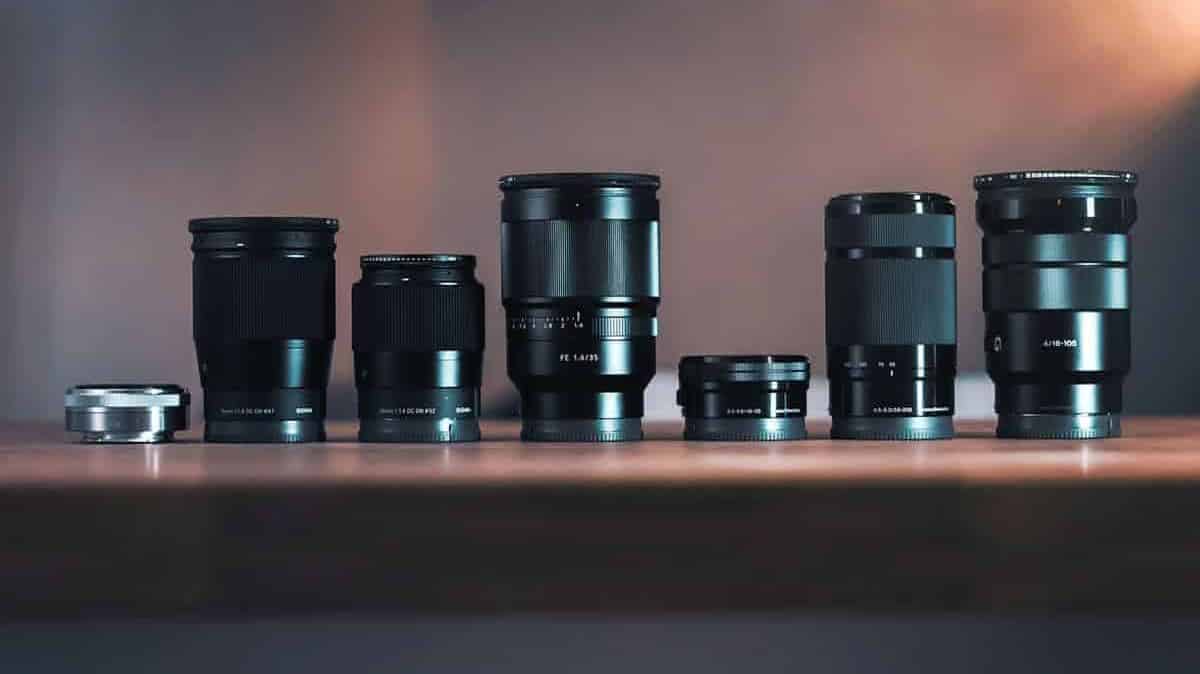
There are primarily two types of lens such as prime and zoom lenses; both are capable of stunning food photography. But some types of lenses can flourish your photography talent like a macro lens, telephoto lens, wide-angle lens, tilt-shift lens, standard lens, and so on.
While identifying these features on your camera lens, you should have a strong vision of the sorts of lenses that are used to create the finest food photography results. This could be tricky to figure out the ideal lens for enhancing your food photography talents.
Because each lens has a distinct position while shooting overhead or close-up shots of food, the same lens may not be suitable for all perspectives of food photography sessions.
Let’s get a closer look at the types and uses of lenses for food photography!
Types and Uses of Lenses for Food Photography
1. Prime Lenses
Prime lenses have stable focal lengths that do not shift. When you truly want to be innovative in taking more attractive food shots on another frame of the image, you must physically move. There are some features to explore the prime lenses-
- Fixed focal length
- They have very wide or large apertures
- Its aperture range is between f/2.8 and f/1.2.
- These lenses are the way to go faster and sharper.
Most food photographers use this due to its versatility and high efficiency. You want to play around with prime lenses, isolate your food platter, and get that beautiful bokeh effect. For if, photographing overhead food shots in natural light with a 50mm to 100mm prime lens may be the ideal option for you!
2. Zoom Lenses
For food photography, zoom lenses are ideal. You can easily change the focal length and zoom range without moving. Because It has such a long focal length, you can keep your camera stable.
- It features a full-frame sensor.
- It has two focal lengths, one for the smallest and one for the largest.
- Divide the greatest focal length by the shortest to get the overall zoom ratio of the lens.
- It has two types of aperture, such as Constant-aperture and Variable-aperture, which offers versatility in images.
For instance, f/4 24-105mm and f/2.8 102-300mm are constant apertures that allow for any challenging lighting situations that make your food images eye-catching.
Whereas variable aperture indicates the focal length rises, the total light strobing capability of the lens drops; as a result, the slower the shutter speed, the longer the focal length. This feature is ideal for close shots even though you’re far from the subject.
3. Macro Lenses
Macro lenses are found in a diverse range of focal lengths, from wide-angle to telephoto. Choosing a diversified macro lens for food photography means exploring the new composition of your food images. If you’re taking photos with a full frame, this lens is welcoming you to dive into the new world of creativity.
- It is a specialized type of lens that is optically tuned to manage super narrower focusing distance.
- It normally has a zoom ratio of 1:1 and an optimum focusing distance of 12 inches or less.
You can wonderfully capture 45° shots that food images are gonna look yummy! But when you click the photos with a 60mm focal length at a shallow depth of 45-degree shots, it gets over the distortion of this angle, whereas 100/105mm does it superbly.
4. Tilt-Shift Lens
Tilt-shift is a special kind of lens that lets your creativity bloom through your thoughts and DOF(depth-of-field). It is formed with two movements, such as tilt movement and shift movement.
- It gives a full grip on the plane of focus and the interconnection of parallel line segments.
- When you add the plane-of-focus segments onto the subject, the other sides of the elements are out of focus.
With this tilt-shift lens, you can shoot your dish photos at the most flattering angle and upgrade your level of food photography.
You may also read: What is the Best Nikon Lens for Sports Photography?
The 10 Best Lenses for Food Photography
After judging all the facts about the lens, we can create a list of lenses that might be perfect to buy. Scroll down the list to find your desired one.
1. Canon RF 50mm F1.8 STM (Best for Beginners)
The cost-effective entry will pass through the full-frame Canon RF 50mm f/1.8 STM lens with its sharpness on the edge of the frame. It creates a blurred, artistic background while taking a photo from frontal, angled, or side-on positions. Its optimized lens placement helps you understand the color balance while minimizing ghosting and flare.
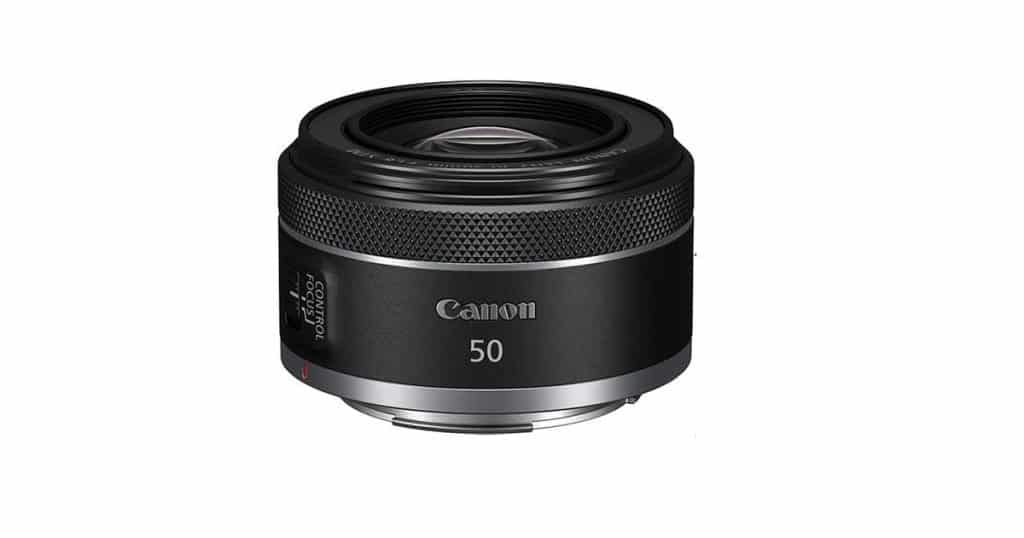
After using its stunning features that create an amazing food atmosphere, you’ve never thought of it at just the early stage of food photography. When we talk about lenses and not consider the aperture like fish without water, its fastest aperture makes your low-light photography stand out in front of the viewers.
Features
- Brand: Canon
- Lens Type: Macro lens
- Sensor Size: Full frame
- Compatible Mountings: Canon RF
- Dimension:1.61×2.72×2.72 inches
- Focal length: 50mm f/1.8 Aperture.
- Focus distance: minimum distance 0.98 ft.
- Image stabilization: up to 7 stops in-body
- Autofocus: fast but nearly silent.
| Pros | Cons |
| Built-in robust | Less suitable for video |
| Affordable | Hood is not included. |
| Sharp focus | |
| Great for closeup and distance shots |
2. Canon RF 16mm F2.8 STM (Best for Food Vlogger)
Are you passionate about food vlogging? So It’s the right place to surf the details. This macro lens is exceptional for clicking such an ultra-wide angle with its fixed focal length. With ultra-wide-angle food and its surrounding photos might attract people to eat up all the stuff.

Though you’ll move a little bit and need extra space while filming your food vlog because of the low end of the focal range, this super compact lens is capable of clicking super close shots and maximizing the details.
Aperture f/2.8STM is best for clicking your food photographs flexible with depth-of-field and lighting surroundings. But ultra-wide might do the barrel distortion, but no worries at all; you can use lens distortion correction in-body that makes sure your shots look natural.
Features
- Brand: Canon
- Lens Type: Macro lens
- Sensor Size: Full-frame
- Compatible Mountings: Canon RF
- Dimension: 165gx4cm.
- Focal length: 16mm f/2.8 Aperture.
- Focus distance: Minimum distance 0.43 ft.
- Image stabilization: Up to 5.5 stops in-body stabilization.
- Autofocus: Swift and steady central focus
| Pros | Cons |
| Fast and sharp focus | RAW files have significant vignetting, barrel distortion, and light scattering. |
| Smart Aperture | Light flare on shallow points. |
| Lightweight with a compact design | |
| Reasonable to buy |
3. Canon RF 100mm F2.8L MACRO IS USM ( Extreme Close-ups)
Close-ups are one of the most effective shots in food photography. That may make food photos look like it’s only a fact of touching it to get out of the frame and devour it.
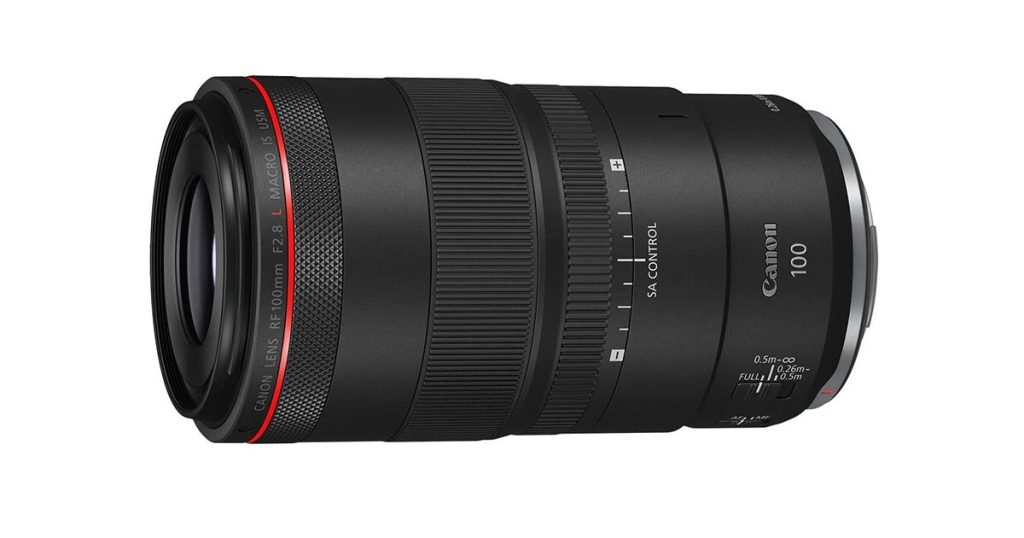
The Canon RF 100mm f/2.8 lens is ideal for extreme close-ups or taken on the front, 45-degree angle, or side-on shots. It will elegantly showcase even the smallest aspect of a grand meal.
The optical build quality of its L series macro lens gives you excellent image sharpness and the option of adjusting the bokeh and soft-focus effects. The optical image stabilized option makes your food photos unwanted and blurred-free.
Features
- Brand: Canon
- Lens Type: Macro lens
- Sensor Size: Full-frame
- Compatible Mountings: Canon RF
- Dimension: 3.21 x 5.83 ft.
- Image stabilization: optical image stabilization up to 5 stops with 8 stops in-body stabilization.
- Focal length: 100mm f/2.8 Aperture.
- Focus distance: Minimum distance 10.2″
- Autofocus: High-speed, smooth, and sharp autofocus.
| Pros | Cons |
| Best for extreme close-up shots | Focus shifting issues |
| Suitable for videos | AF slowness to concentrate on close objects |
| Lightweight and durable |
4. Canon RF 24-105mm F4-7.1 IS STM ( Best Versatile Zoom Lens)
Do you need an ultra-versatile type of lens? Canon EF 24-105mm can be your fantastic choice.
This ultra-versatile is perfect for whichever angle you want to shoot your subject photos.

It’s also an ideal buying lens for food photography. It has an extraordinarily broad zoom range, fits perfectly into small equipment bags, and is suitable for handheld shooting.
With its aperture and focal length, your food photographs look more appealing. You know why! It must meet your artistic needs by taking more inciting photographs and not even unwanted shaky blurred prints on your food photography.
Features
- Brand: Canon
- Lens Type: Telephoto Zoom lens
- Sensor Size: Full-frame
- Compatible Mountings: Canon RF
- Dimension:88.8mm x 76.6mm / 3.5 in. x 3.02 inches.
- Image stabilization: optical image stabilization up to 5 stops at 105mm
- Focal length: 24-70mm f/4-7.1 Aperture.
- Focus distance: Minimum distance 0.43 to 0.7ft
- Autofocus: Internal focusing with stepping motors.
| Pros | Cons |
| Affordable | AF/MF switch not included |
| Sharp Close-focus | Not included hood |
| Lightweight |
5. Nikon AF-S DX 40mm f/2.8G Micro (Best Close-up)
Nikon AF-S DX 40mm f/2.8G Micro is the most affordable option for every photo enthusiast. This shortest focal length for food photography can be approaching your food platters very closely.

With its fastest aperture, you can take the most diverse food photos and add some bokeh effect and sharpness to them. You can click the very small objects very closely with plenty of details.
When you photograph photos far from the subject, the autofocus is fairly fast. Whereas in low-light AF, speed mildly drops but moreover works very well in macro mode.
Features
- Brand: Nikon
- Lens Type: Standard Micro (Macro) lens
- Sensor Size: APS-C
- Compatible Mountings: Nikon F
- Dimension: 2.7×2.5 inches.
- Focal length:40mm f/2.8-22 Aperture.
- Focus distance: Minimum distance 0.53ft
- Optical system: Aspherical lenses with ED glass elements
- Autofocus: Internal focusing with AF-S (silent wave motor)
| Pros | Cons |
| Built-in SWM(Silent wave motor) | Lens not zoomable |
| Sharp close-up shots and shallow depth-of-field | Lack of image stabilization |
| Lightweight & compact design |
6. Nikon AF-S VR Micro-NIKKOR 105mm f/2.8G IF-ED Lens (Best for Auto-focus)
When it comes to food photography, details are a must. Nikon AF-S VR Micro-NIKKOR 105mm, f/2.8G lens, featured with SWM and VR for macro and close-up and for all types of shots. It can ensure your food images are showcased dramatically with sharpness.

With its aperture, the image quality accuracy focused on the effect of light. The overall image quality reduces flare and chromatic aberrations and contributes to the improved color, contrast, and clarity with its Nano Crystal Coat and Extra-low Dispersion. Moreover, You can undoubtedly pick this option into your cart.
Features
- Brand: Nikon
- Lens Type: Telephoto Macro lens
- Sensor Size: Full-frame, APS-C
- Compatible Mountings: Nikon F(FX)
- Dimension: 3.3” x 4.6”
- Image stabilization: up to 3 stops VR (Vibration Reduction)
- Focus lens:105mm f/2.8 Aperture.
- Focus distance: Minimum distance 1.03ft.
- Optical system: Nikon SWM (Silent Wave Motor) with the aspherical lens.
- Autofocus:Internal Focus for Fast Autofocusing
| Pros | Cons |
| Extreme sharp focus and excellent bokeh | High-priced |
| Image optically stabilized | Short working distance |
| Less distortion of image |
7. Sigma 105mm f/2.8 (Budget-friendly)
Sigma 105mm f/2.8 is a great cropped sensor lens. The most aesthetically built Sigma’s lens focuses on the middle position swiftly to access. So that you often see a good blend of blur and tack-sharp focus, forcing the viewer to focus on the primary dish, star meal, or elements that convey your foodie storyline.
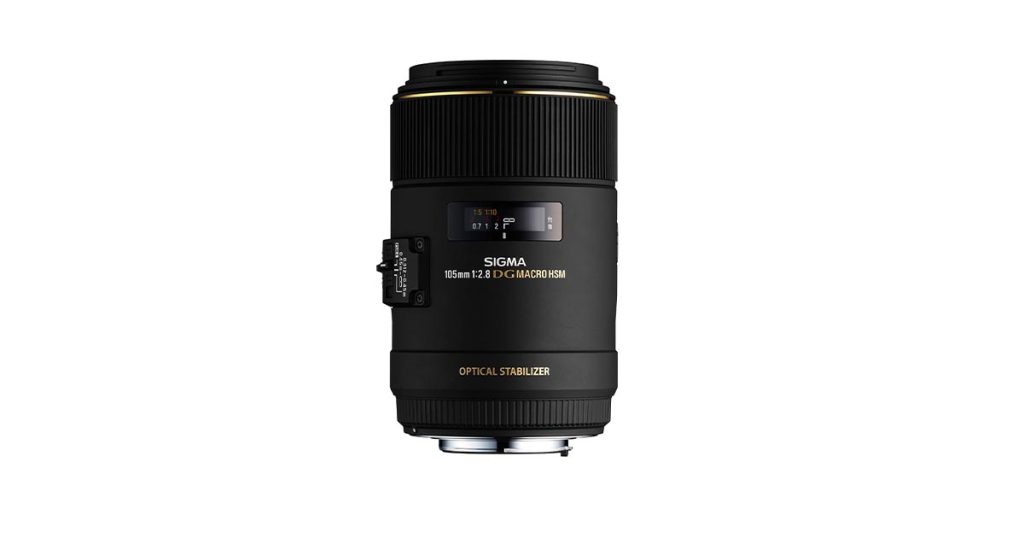
The fast aperture provides adequate light to autofocus to perform well in low-light conditions. The short 105mm telephoto focal length can blur the surroundings into obscurity. While you discover image stabilization, you must be impressed with such an affordable option.
Features
- Brand: Canon
- Lens Type: Telephoto Macro
- Sensor Size: Full-frame, APS-C
- Compatible Mountings: Canon EF
- Dimension: 3.86×3.19×3.19 inches
- Image stabilization: Optical stabilization up to 4 stops
- Focal length: 105mm f/2.8 Aperture.
- Focus distance: Minimum distance 0.31 meters
- Autofocus: Hypersonic Motor (HSM) for fast and accurate autofocusing
| Pros | Cons |
| Extreme sharpness across a frame | Less precision on manual focus |
| Great contrast and color rendition | Noised autofocus |
| Perfect pricing according to performance |
8. Fujifilm XF 60mm f/2.4 R Macro (Best Focus-peaking Lens)
Fujifilm 60mm f/2.4 macro lens can blow your mind with its image quality and edge sharpness. Its bokeh effect can make your food photos look appetizing. With its aperture, corner edges may create sharpness but somewhere lose their details. There you can find some vignetting at f/2.4 aperture but slightly corrected.

Color balance and contrast are stunning to look at. It’s very much irritating when you go from extremely close to far in terms of autofocus, but I must say, it is capable of tracking focus with a beautiful bokeh effect. There is some vignetting wide open, but the resolution from edge to edge is superb all over. In terms of general features, I could say it’s a reasonably balanced lens.
Features
- Brand: Fujifilm
- Lens Type: Telephoto Prime macro
- Sensor Size: APS-C
- Compatible Mountings: Fujifilm X
- Dimension:64.1×70.9mm
- Focal length: 60mm f/2.4 Aperture (Equivalent to 90mmf/3.6 Aperture)
- Focus distance: Minimum distance 0.28m
- Autofocus: Internal focusing
| Pros | Cons |
| Incredible sharpness in picture quality | Annoying focus speed |
| Pleasant contrast and bokeh effect | |
| Reasonable priced |
9. Tamron SP 90mm f/2.8 Di Macro VC USD (Best Natural Light Food Photos)
Tamron is the most popular brand and has given us the best macro lens for food photography till now. This current Tamron SP 90mm f/2.8 Di Macro VC USD lens has a high-tech optical path with both LD and XLD elements, as well as a dual coating to reduce ghosting and flare.

Recently tamron added an image stabilization feature that corrects for shifts in the subject to photograph as well as angular vibration. This lens is best for clicking every angular shot of food in natural light.
You know it’s added moisture and dust-proof construction that should be appreciated. Its aperture can beat other Canon recently launched macro lenses. Moreover, one of the best lenses for food photography ever!
Features
- Brand: Tamron (Canon)
- Lens Type: Macro
- Sensor Size: Full-frame, APS-C
- Compatible Mountings: Canon EF
- Dimension: 7.9×114.6mm
- Image stabilization: up to 3.5 stops of vibrate compensation
- Focal length: 90mm f/2.8-32 Aperture
- Focus distance: Minimum distance 0.30m
- Autofocus: Internal focusing
| Pros | Cons |
| Moisture proofing & dust resistance | Seem noisier VC system |
| Improved VC performance | Macro lens light output is not adequate |
| Affordable in pricing |
10. Sony FE 90mm f/2.8 Macro G OSS (Best for Dramatic Food Photos)
Sony FE 90mm f/2.8 Macro lens makes you feel wondered when you look at the dramatic food photos. It can capture close-up shots with extra details. It contains great value in both photo and video arenas. This image-stabilized lens will show you the intriguing part of your creativity in your final shots.
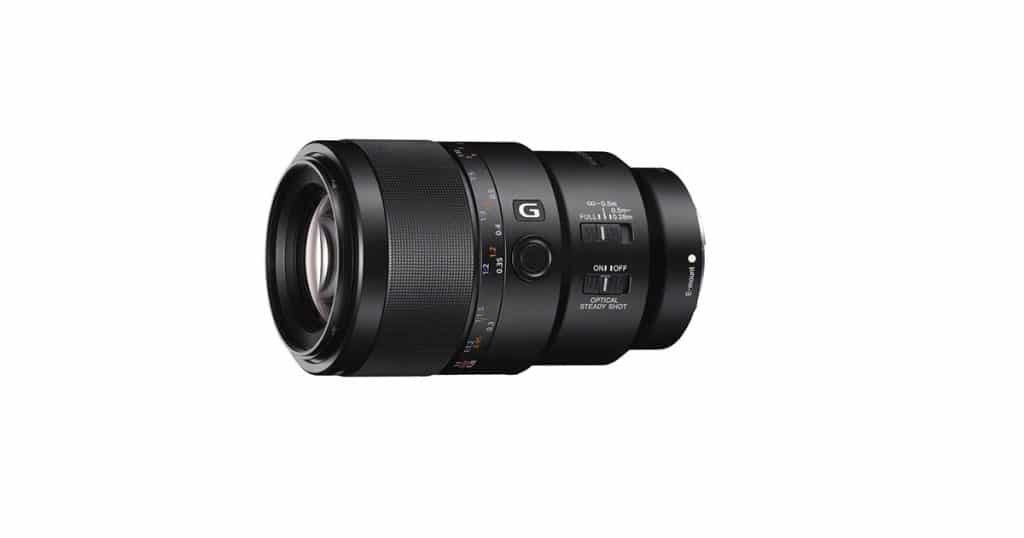
This handheld lens is capable of clicking food photographs in low or dim-lighted restaurants. It is made with quite premium materials in a fairly pricey range.
Features
- Brand: Sony
- Lens Type: Telephoto Prime lens
- Sensor Size: Full-frame, APS-C
- Compatible Mountings: Sony E
- Dimension: 79x131mm
- Image stabilization: up to 5 stops in-body stabilization.
- Focal length: 90 mm f/2.8 Aperture.
- Focus distance: Minimum distance 0.28m
- Autofocus: Internal focussing with DDSSM(Direct Drive Super Sonic wave Motor)
| Pros | Cons |
| Built with weather sealing and premium materials | Fairly Expensive |
| Quite fast and smooth DDSSM(Direct Drive Super Sonic wave Motor) focus motor | Uncommon 62mm filter thread that doesn’t share with other lenses |
| Controlled the aberrations |
FAQ’s The Best Lens for Food Photography
Which food photography lens is best for you?
A 50mm lens is ideal for taking versatile food photographs. Because you can simply frame your food shots overhead or sideways, it allows your dish to shoot a bit more of the scene and avoid distortion.
Is a macro lens good for food photography?
Yes, of course. Macro lenses are extremely worthwhile for –
- Close-up shots or cropped compositions.
- Flat lay and overhead shots.
Is a prime lens better than a zoom lens?
Both lenses are functionalized in different ways. Buying a new lens might be the most confusing task to choose. However, if you want versatility on the lens, go for a zoom lens, or want fixed focal length and maximum wider aperture, go for a prime lens.
Which focal length is good for food photography?
35 to 50mm focal length on the lens is good for food photography. The shorter focal lengths to get the best-snapped food images.
Is 35mm good for food photography?
35 mm is the most versatile focal length for lenses because it lets you to capture different types of camera shots and angles out there. It is without a doubt the greatest selection for food photography since it can portray what the naked eye can view.
Final Words
If you really want to build a great career in the food photography world, you must have a good quality camera and a maximum high-quality lens that can spellbound food photographs or food vlogging to the viewers. So, this recommendation guide digs out the best lens for food photography and assists in picking your desired one. Hope you choose the right one! Good luck!
